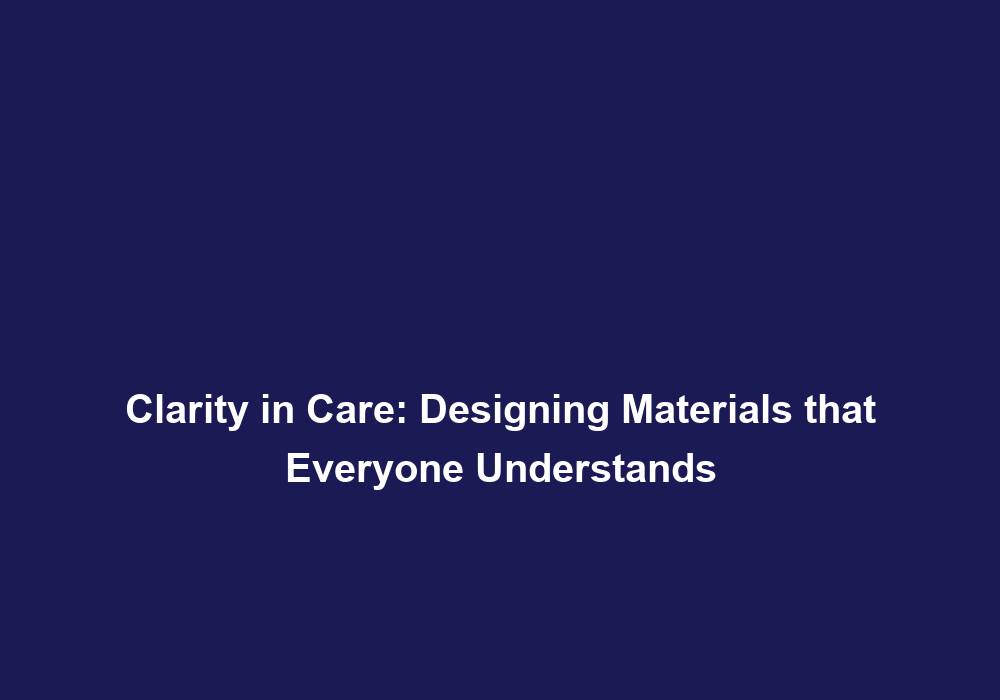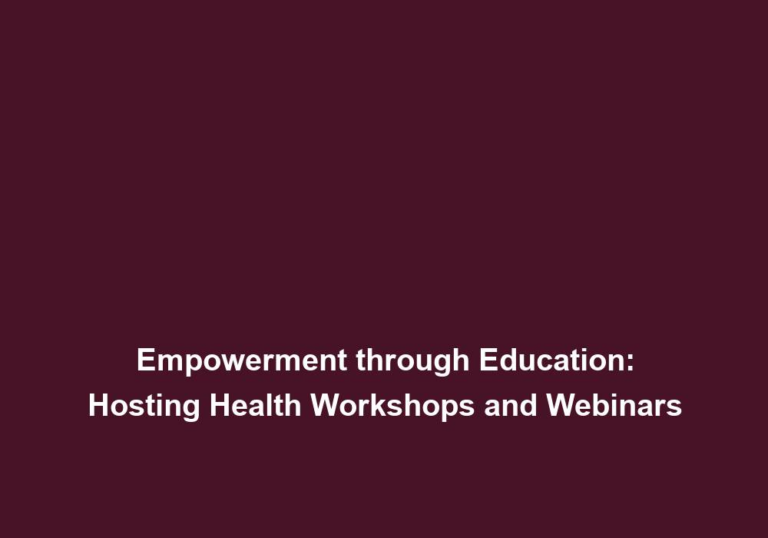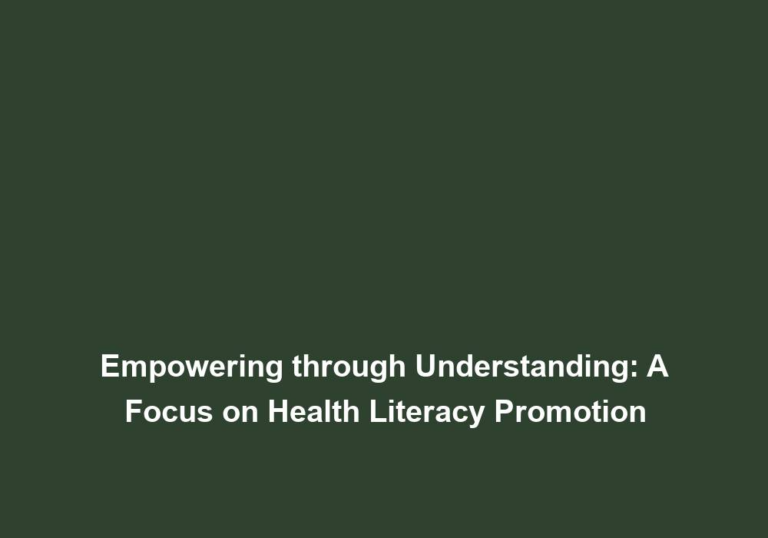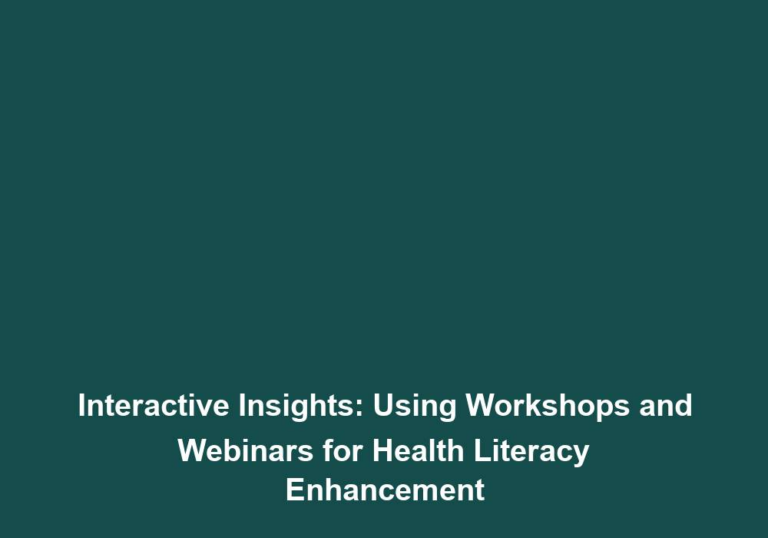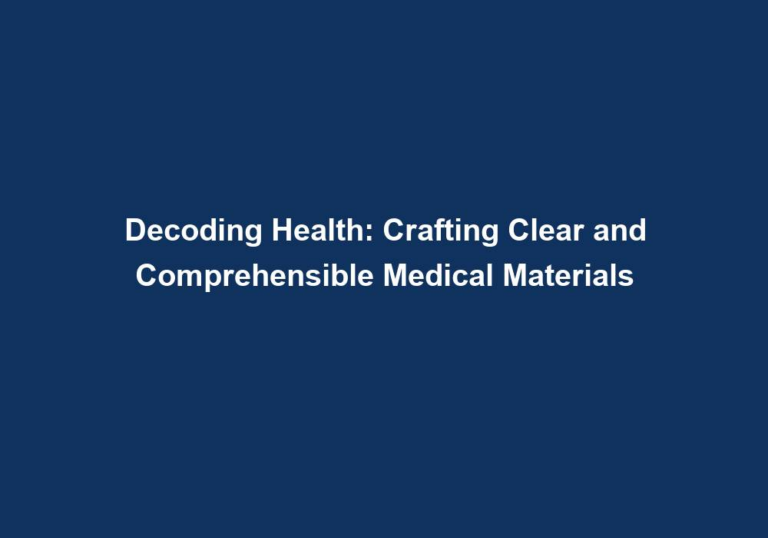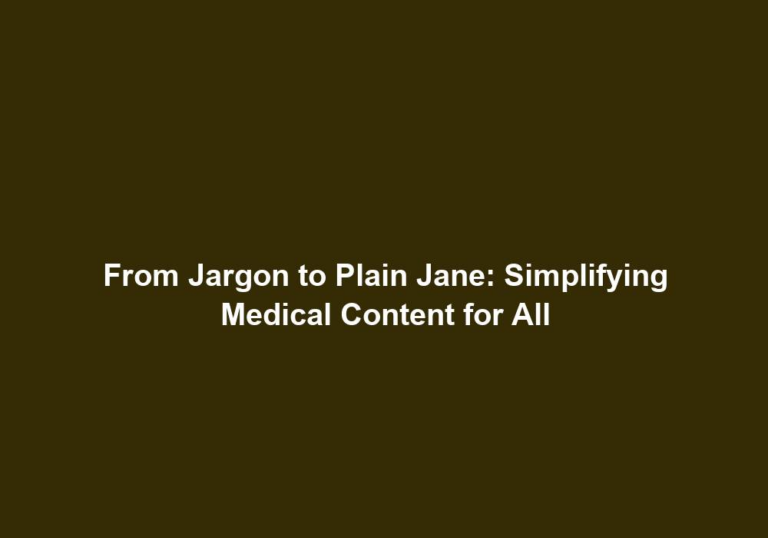Clarity in Care: Designing Materials that Everyone Understands
In the fast-paced world we live in, effective communication between healthcare providers and patients is essential. Clear and concise communication ensures that patients fully understand their conditions, treatments, and medications, leading to better healthcare outcomes. One crucial aspect of effective communication is the design of educational materials that are easily understood by everyone. In this article, we will explore the importance of clarity in care and provide insights into designing materials that cater to the needs of a diverse audience.
Why Clarity in Care Matters
-
Improving Patient Engagement: Clear and comprehensible materials are essential in encouraging patients to actively participate in their healthcare journey. When patients fully understand their conditions and treatment plans, they are more likely to adhere to prescribed therapies and make informed decisions. Patient engagement plays a vital role in achieving positive health outcomes.
-
Enhancing Health Literacy: Health literacy refers to an individual’s ability to obtain, process, and understand healthcare information. Designing materials with simplicity and clarity can significantly improve health literacy levels, enabling patients to navigate the complexities of healthcare more effectively. By presenting information in a clear and understandable manner, healthcare providers empower patients to take charge of their own health.
-
Reducing Medical Errors: Misunderstanding healthcare information can lead to medical errors. By providing materials that are easy to comprehend, healthcare providers can minimize the risk of miscommunication and subsequent mistakes in patient care. Clear instructions and explanations ensure that patients are fully aware of their treatment plans and can follow them accurately, reducing the likelihood of errors.
Strategies for Designing Clear and Understandable Materials
-
Use Plain Language: Avoid using technical jargon and complex terms that may confuse patients. Opt for simple words and phrases that are familiar to a broader audience. Consider utilizing plain language guidelines, such as those recommended by health literacy experts, to ensure clarity. By using plain language, healthcare providers can effectively communicate with patients from diverse backgrounds and varying levels of health literacy.
-
Consider Visual Elements: Incorporating visual aids, such as diagrams, illustrations, and infographics, can greatly enhance understanding. Visuals can help convey complex concepts in a more accessible manner, especially for individuals with low health literacy or language barriers. They provide an additional layer of explanation that complements the written content, making it easier for patients to grasp important information.
-
Organize Information: Structure the content in a logical manner, using headings, subheadings, and bullet points to break down information into smaller, digestible sections. This approach allows patients to navigate through the material easily and find the information they need without feeling overwhelmed. By organizing the information effectively, healthcare providers can facilitate the absorption and retention of knowledge.
-
Tailor for Different Literacy Levels: Recognize that patients have varying levels of health literacy. Consider creating different versions of the same material, tailored to different literacy levels. This ensures that the content is neither too simplified nor too complex, accommodating the needs of a diverse audience. By offering materials at various literacy levels, healthcare providers can cater to individuals with different educational backgrounds and language skills.
-
Utilize Readability Tools: Take advantage of readability tools and software to assess the readability level of your content. These tools analyze factors like sentence structure, word complexity, and reading ease, providing valuable insights to improve the overall clarity of your materials. By utilizing these tools, healthcare providers can fine-tune their content to ensure it is easily understood by the target audience.
-
User Testing: Conduct user testing to gather feedback from a sample audience. This feedback can help identify areas where improvements can be made to enhance comprehension. Engage with patients and solicit their input to gain valuable insights into their needs and preferences. By involving patients in the design process, healthcare providers can ensure that their materials are effective and resonate with the intended audience.
Best Practices in Designing Clear Materials
-
Font and Formatting: Choose a legible font type and size that is easy to read, especially for individuals with visual impairments. Additionally, utilize formatting techniques like bolding, italics, and underlining to highlight key points and important information, making it easier for patients to locate and comprehend. These formatting techniques draw attention to crucial details, aiding in comprehension.
-
Color Usage: Be mindful of color choices, ensuring that text and visuals have sufficient contrast to maximize readability, especially for individuals with color vision deficiencies. Color-coded information should also be accompanied by clear labels or explanations to avoid confusion. By considering color contrast and providing clear explanations, healthcare providers can ensure that patients can easily interpret the information presented.
-
Multilingual Approach: In multicultural societies, providing materials in multiple languages can improve accessibility and understanding. Translate key content into commonly spoken languages within the community to support individuals who may have limited English proficiency. This approach fosters inclusivity and ensures that language barriers do not hinder patients’ comprehension and engagement with healthcare information.
-
Accessibility Considerations: Ensure that all materials meet accessibility standards, such as providing alternative text for images for individuals using screen readers, using closed captions in videos, and ensuring compatibility with assistive technologies. By making materials accessible to individuals with disabilities, healthcare providers can ensure equal access to healthcare information and empower all patients to make informed decisions about their health.
Conclusion
Designing materials that prioritize clarity in care is crucial for effective communication with patients. By employing strategies like using plain language, incorporating visual elements, and tailoring content to different literacy levels, healthcare providers can enhance patient engagement, improve health literacy, and reduce medical errors. Following best practices in font and formatting, color usage, multilingual approaches, and accessibility considerations further ensures that materials are accessible to a diverse audience. Ultimately, embracing clarity in care leads to better patient understanding, empowerment, and improved healthcare outcomes.

